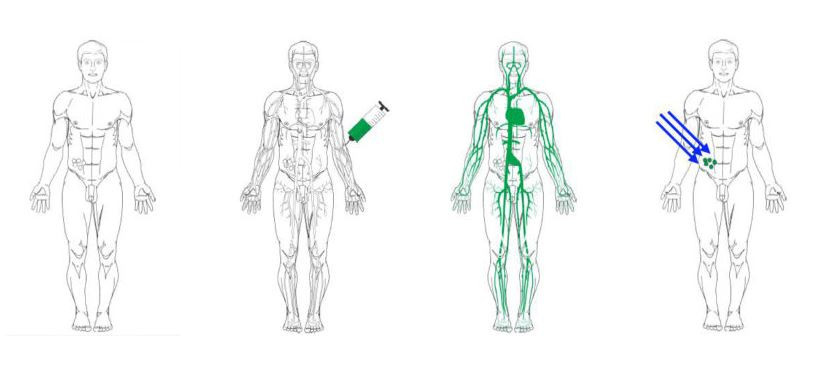Photodynamic Therapy (PDT) - Effective and precise against cancer

PDT is a pioneering procedure in dermatology and in holistic cancer therapy.
In the field of alternative cancer therapy, photodynamic therapy, or PDT for short (also commonly referred to as laser light therapy), is an innovative and promising treatment method that is used to eliminate malignant tumor tissue. Their effectiveness is based on the use of so-called photosensitizers.
These are certain substances that sensitize tumor cells to light. The tumor tissue is then irradiated with visible laser light from the blue to the red range. The laser light creates aggressive oxygen molecules that destroy the tumors. Since photodynamic therapy (PDT) has little effect on healthy cells, it is also suitable for areas of the body where other types of treatment would be problematic or difficult to carry out.
Which diseases can be treated with PDT?
Photodynamic therapy is already a proven standard pocedure in ophthalmology and dermatology. In cancer treatment, it represents a non-invasive or minimally invasive therapy that is used for bladder cancer, prostate cancer, basal cell carcinoma, actinic keratoses and Bowen's disease.
PDT is usually painless and has no serious side effects. Because the destroyed cells are replaced by normal cells after the treatment, a good healing process can be expected as a result.
Photodynamic therapy is often not only used on its own, but can also be combined with other therapy and treatment methods, such as low-dose chemotherapy (IPT), radiation therapy or surgery. While some forms of therapy can only be used once, PDT can be carried out as often as you like due to its harmlessness.
Photodynamic therapy is successfully used for the following indications:
- chronic prostatitits
- tissue changes
- benign enlargement of the prostate & prostate cancer
- Lyme disease
- multiple sclerosis
- parasites, bacteria and viruses
- basalioma
- bladder cancer
- cervical cancer
- skin cancer
- Bowen's disease
PDT is usually painless and has no serious side effects
 Example:
Example:
Ewing's sarcoma (ES) is an extremely aggressive bone cancer. At one of our partners, e.g. for example, a sarcoma is treated with photodynamic therapy.
 PDT and its targeted mode of action
PDT and its targeted mode of action
Photodynamic therapy is much gentler on the patient than many other methods, because compared to the usual treatment approaches, the side effects and health risks are extremely low. Our partners use chlorin E6, hypericin and curcumin as photosensitizers.
The effectiveness of the photosensitive substance is only activated when it is irradiated with laser light of a suitable wavelength. The laser light is guided through a special light guide to the areas to be treated and focused in such a way that only the tumor cells are exposed. The active principle is based on photochemical processes that are set in motion during PDT and specifically damage the tumor.
The photosensitizer is injected into the patient's bloodstream, whereupon it is distributed throughout the body, but primarily enriches the cancer cells. As a result, light-sensitive porphyrins are formed in these. The porphyrin molecules go into a so-called triplet state and the absorbed energy is transferred to the triplet oxygen. This energy transition puts the oxygen molecules into an excited state, eventually forming singlet oxygen.
This oxidizing agent is highly reactive and highly cytotoxic - it is therefore a very strong cytotoxin. Its effect ultimately manifests itself in necrosis of the affected cells and, under certain circumstances, simultaneous apoptosis, a programmed cell death of the tumor cells set in motion by the body itself. There is no further damage to healthy cells due to the local effect of the oxygen radicals.



